When it comes to microwave ovens, size does matter. But what is the standard size of a microwave oven? Is there such a thing?
It turns out that there is no such thing as a standard microwave oven size. Microwaves come in all shapes and sizes, and the range that’s right for you depends on your needs and preferences.
So if you’re in the market for a new microwave, don’t get hung up on finding the perfect size. Instead, focus on finding the ideal match for your space and lifestyle.
What is a standard microwave size?
Nowadays, most homes have a microwave oven. They come in all shapes and sizes, but what is the standard size of a microwave oven?
Microwave ovens are measured in cubic feet. The average size of a microwave oven is between 1 and 2 cubic meters. Some larger models can hold three cubic feet or more.
The size of the microwave will determine how much food it can hold. Smaller microwaves are suitable for heating smaller meals or snacks, while larger microwaves accommodate larger containers.
Why is microwave size important?
There are two main types of microwave ovens on the market: compact and full size. Full-size microwaves are typically between 20 and 24 inches wide, while compact microwaves are typically between 18 and 20 inches wide. Both types come in different heights and depths, so it’s important to double-check the measurements of any model you’re considering before purchasing.
The size of your microwave is essential for two main reasons: capacity and power. Microwaves with higher capacity can cook larger meals or more dishes at the same time, while those with higher power cook food faster. If you cook a lot or entertain often, a full-size microwave is probably a better option for you. If space is limited or you only use the microwave for small tasks such as heating coffee or defrosting meat, a compact model will suffice.
How to select the correct size microwave for your kitchen?
When it comes to microwave ovens, one size does not fit all. That’s why choosing the right size microwave oven for your kitchen is essential.
As a general rule, the bigger the microwave, the more power you need to heat food evenly. In terms of power, most microwaves range from 600 to 1200 watts. But that’s just the starting point – other factors like your cooking needs and kitchen layout will also come into play when choosing the right size microwave for your home.
Here are some things to consider when choosing a microwave oven:
-How often do you cook? A smaller microwave will probably suffice if you cook or reheat occasionally. However, if you do a lot of cooking from scratch, you may want a larger model with more features, such as sensor cooking controls that adjust cooking times for different foods.
-What else will happen in your kitchen? If space is limited, consider a microwave with a larger range that frees up counter space by placing it directly above the cooktop. Or, if you have a lot of other small appliances on your counter, such as a coffee maker or toaster, choose a compact microwave that can easily be stowed away when not in use.
– What type of food will you microwave? If you mostly reheat leftovers or frozen meals, look for a model with pre-programmed defrost and cook settings. But if you plan on doing more advanced cooking, like steaming vegetables or popping popcorn, look for a more powerful model with extra features like expandable cooking trays and an automatic sensor popcorn button.
How to measure for a new microwave
When measuring for a new microwave, you’ll need to consider the size of the space you have available, as well as the size and power of the unit itself. If you have limited space, you may want to consider a smaller team with less power.
The first step is to measure the width, depth and height of the room. You should leave at least 2 inches on all sides for proper ventilation. Once you have these measurements, you can start shopping for a unit that will fit comfortably in your space.
When deciding on the size, it is essential to consider the output power of the microwave oven. You need to ensure that the unit you choose has enough power to heat the food properly. Most microwave ovens range from 600 to 1200 watts.
After considering all of these factors, you can narrow down your choices and choose the perfect microwave oven for your needs.
Five popular microwave sizes for your kitchen
There are some factors to consider when buying a microwave oven such as power, capacity and size. Depending on your needs, you may want a smaller or larger microwave. Here are five popular sizes to help you make the best decision for your kitchen.
– compact: These microwave ovens are usually 0.5-0.7 cubic meters and have 700-800 watts of power. They are perfect for small spaces or if you don’t use the appliance often.
– medium-sized: medium-sized microwave ovens are usually 1 to 1.2 cubic meters in size and have 800-1000 watts of power. They are a good choice for medium-sized kitchens and families.
– Full Sizes: Full size microwave ovens are usually 1.6-2 cubic feet and have 1000-1200 watts of power. They can accommodate large meals and families.
Convection microwave ovens have all the features of a full-size microwave, but also have a built-in fan that circulates hot air, making them ideal for even cooking and reheating of food.
– inverter: inverter microwave ovens use less energy and produce less heat than other microwave ovens, making them more efficient and gentler on food.
Three small microwaves for limited counter space
Compact microwave ovens are great for small kitchens, bedrooms or offices. These models are usually 0.5 to 0.7 cubic meters in size. Countertop microwave ovens range from 1.1 to 2.0 cubic feet. Although some microwave ovens can be large, most people don’t need more than two cubic feet of space.
Two large microwaves for family cooking
Most families will find that two large microwave ovens are sufficient for cooking. The average microwave is between 1 and 2 cubic feet, so two of these will give you enough space to cook larger meals. If you entertain often or have a large family, you may want to consider investing in a larger model.
How to save space with an over-the-range microwave
A microwave oven with a larger range is a great way to save space in the kitchen. These microwave ovens are designed to sit above the stove, freeing up valuable counter space.
There are a few things to keep in mind when shopping for a larger range microwave oven. First, you need to make sure that the microwave will fit in the space above your stove. Most larger range microwave ovens are 30 inches wide by 16 inches deep.
You will also consider the power of the microwave. More power means the microwave will cook food faster. Most larger range microwave ovens are between 900 and 1200 watts.
Finally, you’ll need to decide if you want a model with unique features like a popcorn cooking sensor or a meat defroster. These extra features can be useful, but they will also add to the price of the microwave.

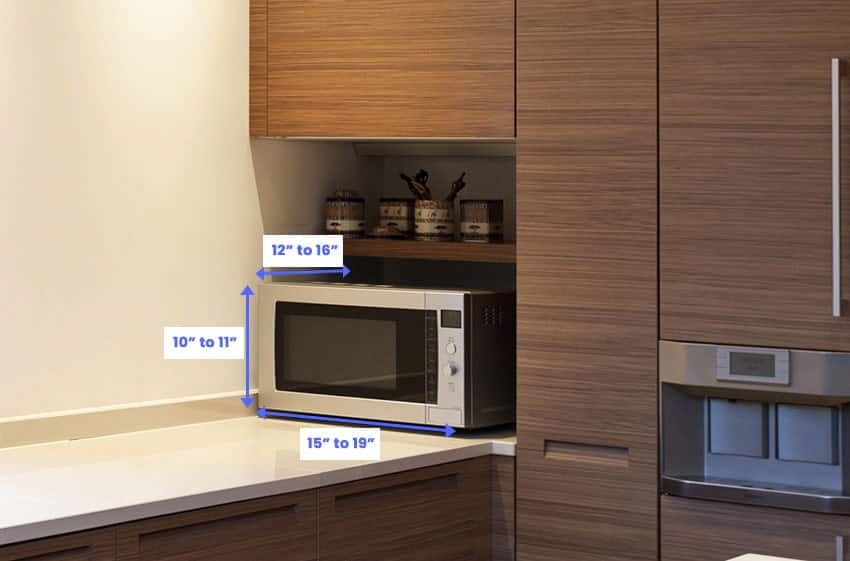
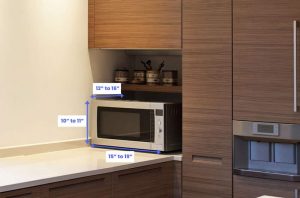
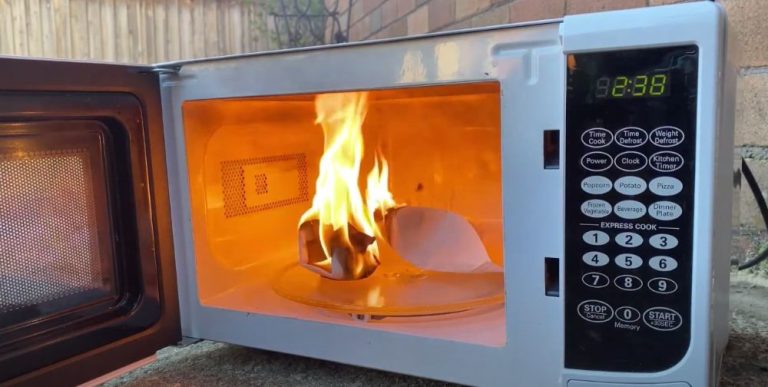


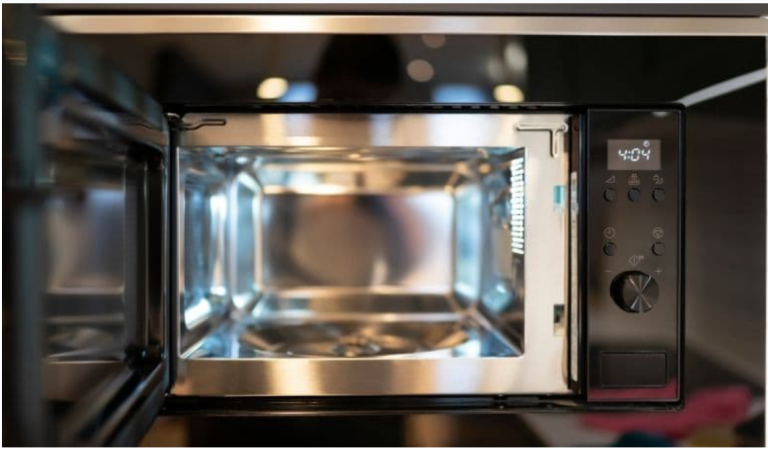
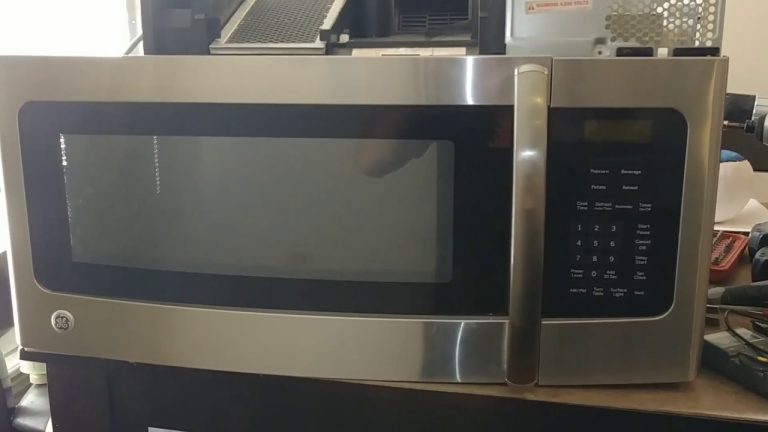

6 Comments